
Dungeness Nuclear Terminal
This interesting site
is located far out on Kent’s southernmost point, in the United Kingdom’s only
desert and Europe’s largest shingle foreland. It lies at the end of the remnants
of a single-track branch line dating back to 1881. Briefly re-capping, a line
across the Romney Marsh between Ashford and Hastings was brought into use by the
SER on 13th February 1851. By Act of 8th April 1881, the nominally independent
‘’Lydd Railway Company’’ was formed to build a ten-mile single-track line across
the bleak peninsula to Lydd and Dungeness. This left the Ashford to Hastings
line at Appledore, and the section of line between there and Lydd was opened to
passengers on 7th December 1881 – beyond, to Dungeness, was initially goods
only. Passenger services were extended to Dungeness on 1st April 1883. On 19th
June of the following year, a three-mile single-track line was opened to
passengers from ‘’New Romney Junction’’, 7¾-miles south of Appledore, to New
Romney.
We now fast-forward to 4th July 1937, when the Southern Railway opened a
re-aligned branch line to New Romney. It left the Appledore to Dungeness line
1¼-miles south of the original ‘’New Romney Junction’’, at ‘’Romney Junction’’,
and had been re-sited closer to the sea to entice holidaymakers to the shingle
wasteland. As a result, the last passenger trains served the diminutive station
at Dungeness the previous day, but the short stretch of track beyond Romney
Junction remained in use for goods traffic. In this capacity the short stub
ceased in May 1953, and the track to Dungeness was lifted. Ordnance
Survey Maps confirm that the junction was completely abolished, but the name
retained as a reference point.
In July 1960, construction of Dungeness’ ‘’A’’ nuclear power station commenced.
Reactor 1 started supplying electricity to the National Grid in September 1965,
full power operation being achieved in November of that year. By this time, the
branch line to Lydd and New Romney was in terminal decline – at least for
passenger trains. A stone terminal was brought into use at Lydd in 1965 and
became a railhead for aggregate trains. Passenger services to Lydd and New
Romney ceased on 6th March 1967, and the 1937-opened branch line to the latter
was lifted.
A
short stub of the New Romney branch, little more than 250-yards in length, was
retained, and a 200-yard-long stretch of the former
Dungeness spur was re-laid. Upon the latter was established a secure compound
where nuclear waste from the nearby power station could be loaded onto ''Flatrol''
wagons and subsequenly dispatched to Sellafield, Cumbria.
Generally, the original schedule saw that one train a week ran between Dungeness
and Sellafield – at the latter, the waste delivered from the former was
re-processed. This involved splitting up waste fuel into its various individual
components, such as uranium and plutonium, so that in some cases, it could be
re-used to produce new nuclear fuel. In 1984, Dungeness ‘’B’’ became
operational, construction having started as long ago as 1965.
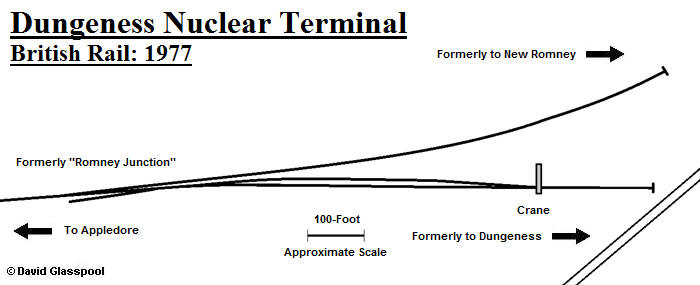
Track plan of 1977, showing run-a-round loop and the short remaining section of the New Romney branch. Drawn by David Glasspool
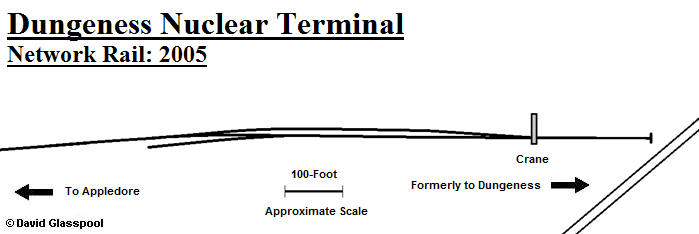
Track plan of 2005, by which time the New Romney stub had gone. Drawn by David Glasspool
29th December 1993
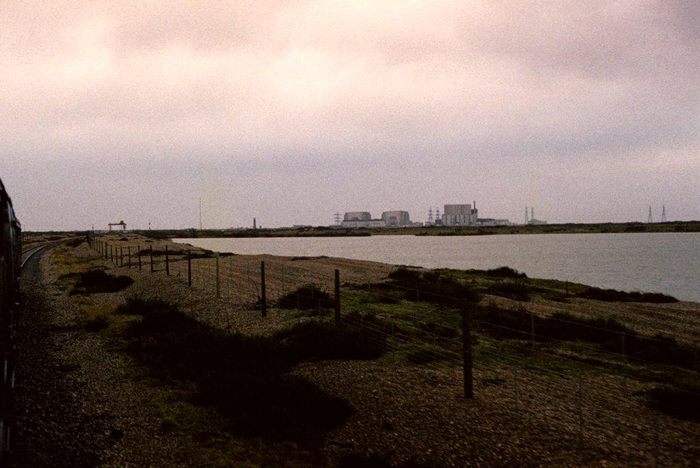
A rail tour in 1993 provided the opportunity to travel along the branch line to Dungeness. Class 33 No. 33116 propelled 4TC unit Nos. 410 and 417. In the background, on the left, can be seen the crane gantry which lifts nuclear flasks onto wagons. On the horizon to the right is the unmistakable outline of the power station. © Wayne Walsh
29th December 1993
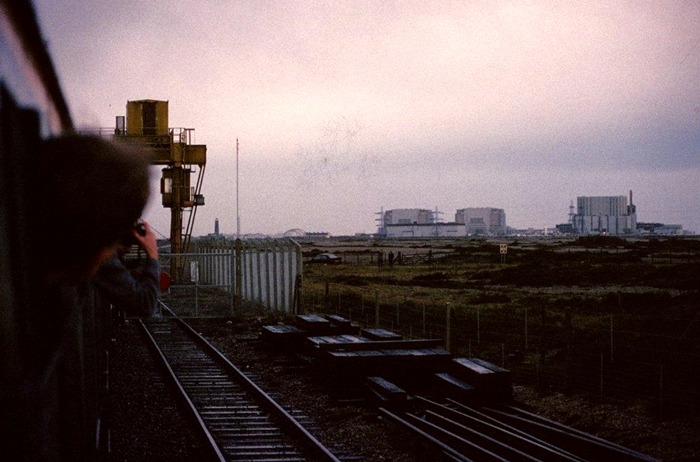
Now much closer to the crane, we can see that the compound is fenced off and gated. The passing loop merges to single-track immediately before reaching the crane. © Wayne Walsh
29th December 1993
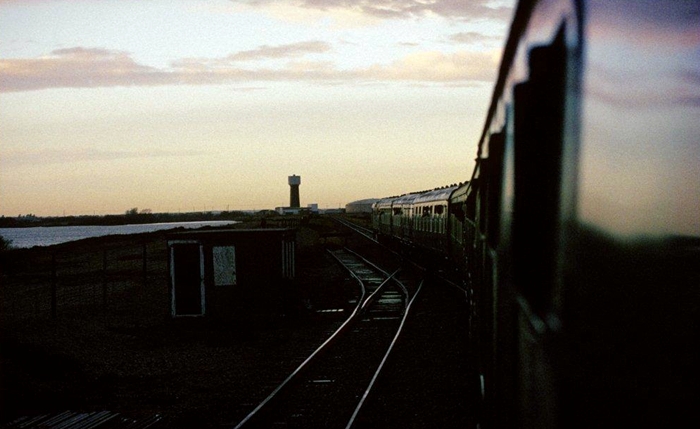
Our rail tour begins its return leg back to Appledore. Here, looking towards Lydd, we can see the passing loop converging to single-track, in addition to the short siding shown on the track diagram. © Wayne Walsh
12th October 1995
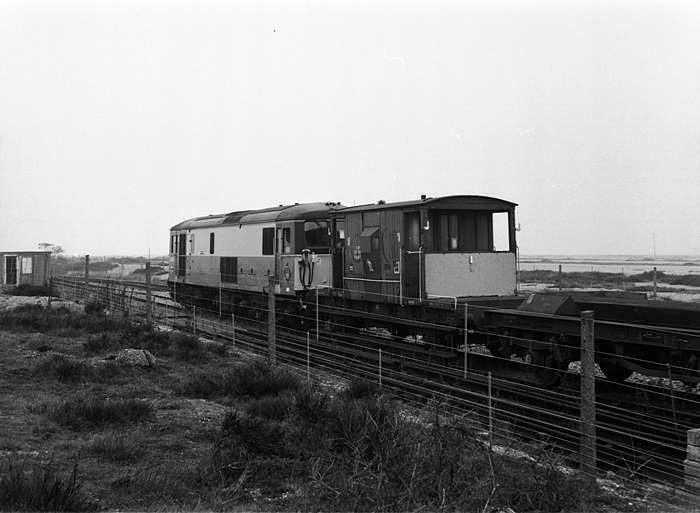
Electro-Diesel No. 73138 is seen at the head of a nuclear flask formation, wearing the ''Dutch'' livery of the Civil, Mechanical & Electrical Engineering department. In the background, in front of the locomotive, can be seen the run-a-round loop. Beyond, the bleak landscape disappears into infinity. © David Glasspool Collection
20th March 1997
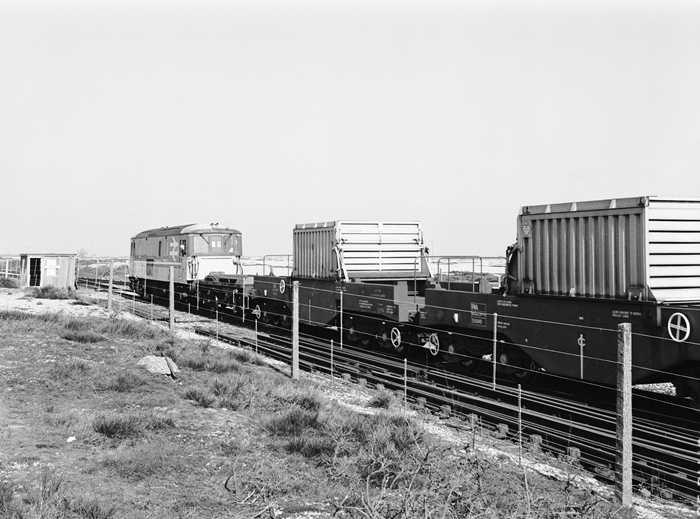
Two ''Flatrol'' wagons, complete with flasks, were the order of the day on this occasion, which saw InterCity liveried Electro-Diesel No. 73104 at the helm. Out of view, to the right, was the crane that lifted flasks onto the wagons. Today, the short stub of the closed New Romney branch is no more. © David Glasspool Collection
Return to the Kent Rail Homepage or alternatively, check for Updates.
Website & Copyright information - Links - Contact the Webmaster
All content is copyright © David Glasspool unless otherwise stated